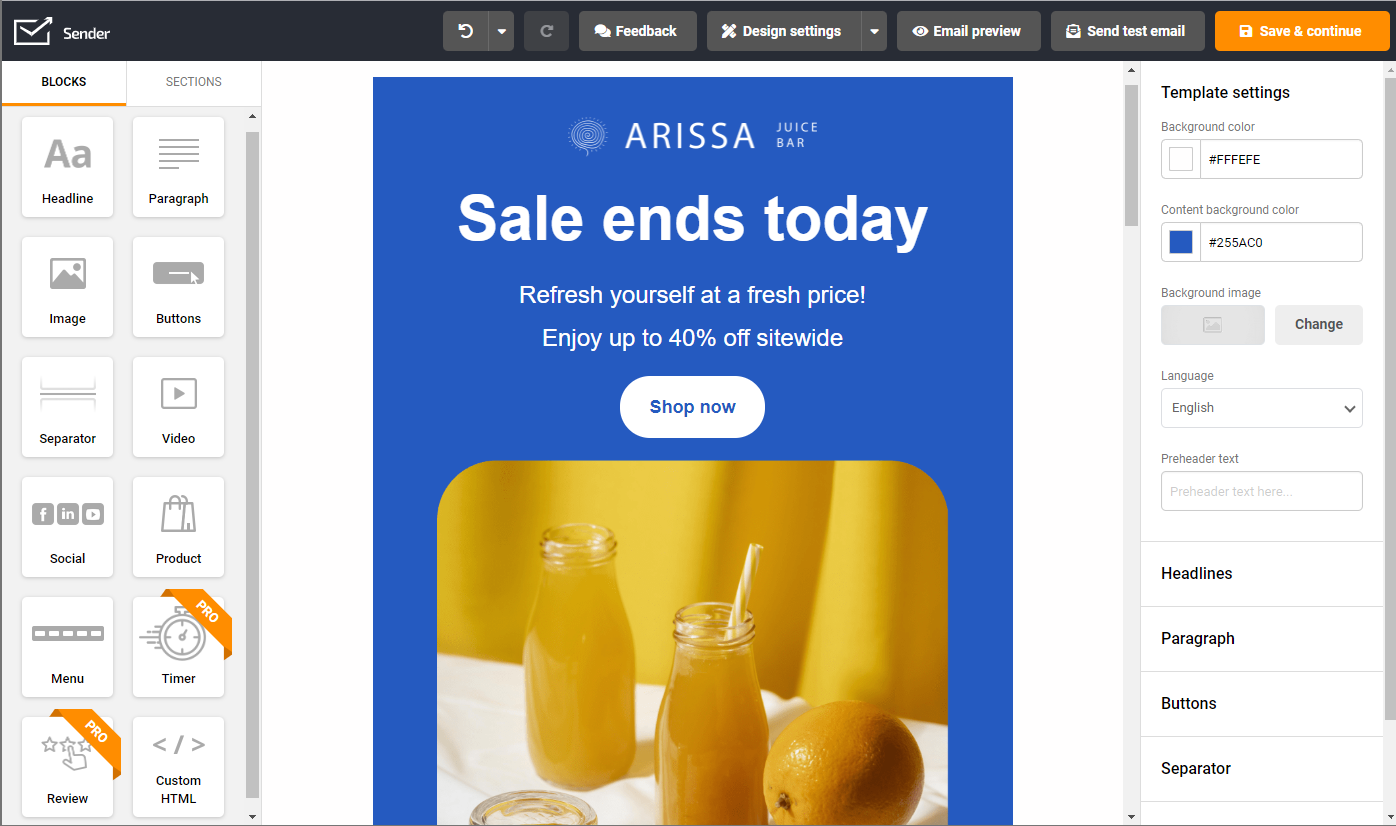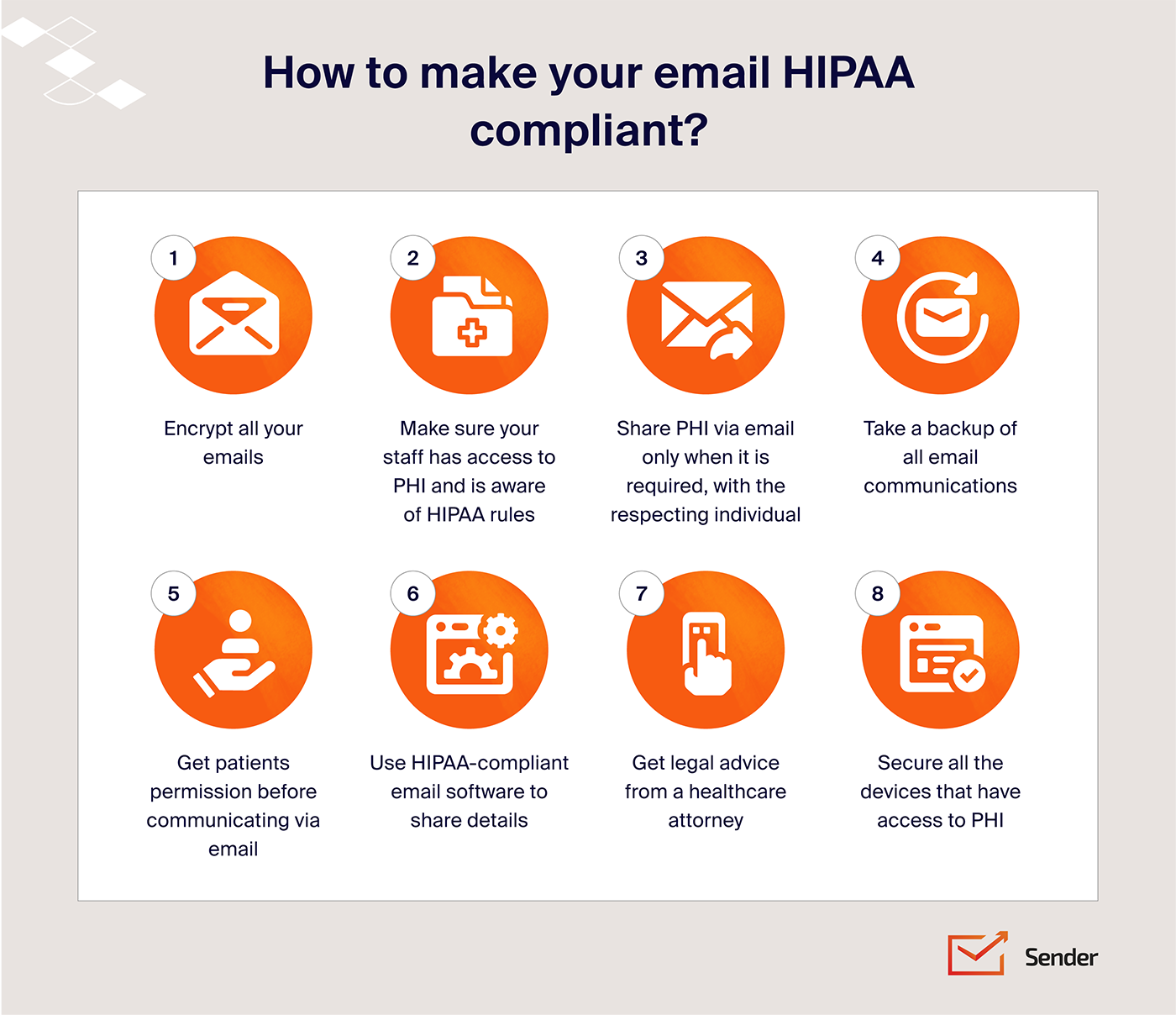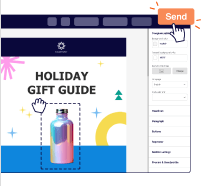Emails are important for daily communication. You need them to communicate with colleagues, patients, healthcare providers, and more. However, when sharing sensitive data like patient health information, a simple “Send” click can lead to severe penalties if HIPAA compliances aren’t met.
HIPAA secure emails maintain patient privacy and ensure regulatory compliance in the healthcare sector. But what exactly makes an email “HIPAA secure,” and how can you meet all regulatory compliances?
In this blog, we look at all the critical components of a HIPAA secure email service — from critical components to best practices and more.
What is HIPAA Secure Email?
A HIPAA secure email is an email communication that complies with the Health Insurance Portability and Accountability Act (HIPAA) regulations for protecting sensitive patient health information.
The email should ensure that patient data remains confidential, intact, and accessible only to authorized individuals throughout the entire email lifecycle – from drafting to transmission, storage, and eventual deletion.
HIPAA secure emails should pass different data security measures and best practices designed to safeguard Protected Health Information (PHI) at every step. Here are some rules for a HIPAA compliant email solution:
- Safety & security measures. Should adhere to outlined HIPAA Privacy, Security, and Breach Notification Rules, including obtaining necessary patient consent and implementing required technical safeguards;
- Encrypted. Emails containing PHI should be encrypted both in transit and at rest, preventing unauthorized access;
- Sent using a secure infrastructure. Only to be sent via HIPAA compliant email provider or properly configured enterprise email systems, often involving Business Associate Agreements (BAAs) with service providers;
- Leave audit trails. Comprehensive logging and monitoring systems to track all email activities involving PHI, enabling detailed audits and rapid response to potential security incidents.
Key Components of HIPAA Compliance Email
If you want to set up HIPAA compliant email system, here are the most essential components you must put in place:
Encryption
Encryption is one of the most critical aspects of HIPAA-compliant emails. The act requires every email to be encrypted to prevent unauthorized access.
For HIPAA compliance, emails should use an end-to-end encryption protocol. Even emails stored on a server should be encrypted to prevent unauthorized access in case of a breach.
Here are the email encryption best practices for HIPAA compliance:
- Using end-to-end encryption to protect emails in transit and at rest;
- Implementing TLS (Transport Layer Security) 1.2 or 1.3 for email transmission;
- Streamlining proper management and protection of encryption keys;
- Regularly updating encryption protocols to maintain the highest level of security.
Authentication
Authentication ensures that only authorized individuals can access emails containing PHI. This involves far deeper measures than simple password protection.
Generally, the authentication process involves multiple layers of security to verify the identity of a user. Here are the most critical authentication components of a HIPAA-compliant email service:
- Multi-factor authentication (MFA) for email access;
- Strong password policies such as regular password change and restriction on password reuse;
- Routine user authentication protocols to verify the identity of email users;
- Role-based access controls to limit PHI access to necessary personnel only.
Secure Protocols
Secure protocols are set to protect sensitive information from manipulation, interception, and unauthorized access. This involves setting up a secure framework to protect PHI throughout the emailing process.
To be HIPAA-compliant and send secure messages or emails, here are some tips and best practices you should implement:
- Use a secure email gateway to filter incoming and outgoing emails for threats;
- Implement S/MIME (Secure/Multipurpose Internet Mail Extensions) for email signing and encryption;
- Utilize secure file transfer protocols like SFTP or FTPS when sending large files containing PHI;
- Regularly update and patch email servers and clients to address security vulnerabilities.
Data Loss Prevention
Data Loss Prevention (DLP) policies are designed to prevent and monitor the unauthorized transmission of sensitive information. These policies reduce the risk of accidental or intentional breaches of PHI and maintain HIPAA compliance.
Here are some best practices and steps to set up effective DLP strategies for HIPAA-compliant email systems:
- Set up a DLP software to monitor and control what data leaves your organization via email;
- Create content filters to detect and block emails containing unencrypted PHI;
- Enforce policies for handling PHI in emails, including rules for forwarding and replying;
- Conduct regular audits of email practices to ensure compliance and identify potential risks.
Digital Signature
A digital signature validates that an email is genuinely sent by the right source (or sender) and hasn’t been tampered with during transmission.
It verifies the authenticity and integrity of the email message containing PHI, an essential element of HIPAA compliance. Here’s what you should do:
- Assign digital signatures to verify the sender’s identity;
- Implement a Public Key Infrastructure (PKI) to manage digital certificates and signatures;
- Train staff on the importance of digital signatures and how to use them correctly;
- Regularly review and update digital signature policies to align with current best practices and regulations.
Stay connected with your patients, stress-free. Sender helps you stay HIPAA-compliant without the hassle — so you can keep your focus on your patients.

Usage of HIPAA Secure Email
Setting up a secure email system that ranks high on all the above components is an essential part of HIPAA compliance for healthcare organizations. This protects sensitive patient information and saves you from a lot of trouble.
Here’s a breakdown of the process of using HIPAA secure email at your organization:
Encrypt emails using TLS during transmission:
- Enforce Transport Layer Security (TLS) 256 bit encryption for all outgoing emails;
- Verify that recipient email servers support TLS before sending PHI;
- Use email platforms that automatically encrypt emails containing sensitive information.
Implement secure login methods and two-factor authentication:
- Enforce strong password policies in all email accounts;
- Implement two-factor authentication (2FA);
- Use biometric authentication methods where possible.
Use a secure email gateway to filter and monitor emails for threats:
- Set up filters to detect and quarantine potential phishing emails and malware;
- Configure content filters to identify and encrypt emails containing PHI automatically;
- Use the gateway to enforce organization-wide email policies, such as preventing the sending of unencrypted sensitive information.

Remember that HIPAA secure email compliance is not a one-time setup but an ongoing process that requires regular monitoring, updates, and staff training to ensure continued effectiveness and compliance. So, keep optimizing your email processes as per the rules and regulations.
HIPAA Secure Email FAQs
What are the HIPAA email security requirements?
HIPAA email security requirements outline various measures to protect Protected Health Information (PHI). These include encrypting emails both in transit and at rest, implementing solid access controls, using TLS 1.2 or 1.3 encryption protocols, conducting regular risk assessment audits.
Also, providing comprehensive employee training on PHI handling, implementing data loss prevention systems, maintaining detailed access and transmission logs, and having Business Associate Agreements (BAAs) with business associates like HIPAA compliant email providers.
Additionally, organizations must ensure that emails include only the minimum necessary PHI and that all communications are sent securely to authorized recipients only.
Is emailing PHI considered a HIPAA violation?
Emailing PHI is not a HIPAA violation straightaway. However, it can violate HIPAA rules if proper safeguards are not in place. These safeguards include encrypting emails, sending them via secure transmission protocols, and setting up access controls.
To avoid violations, companies should use HIPAA-compliant email services and follow best practices for handling PHI in electronic communications.
How can you determine if an email complies with HIPAA?
Checking if an email complies with HIPAA involves assessing different factors. First, ensure the encrypted email should be protected by TLS 1.2 or higher encryption. Next, verify if access controls are in place for authorized use.
A system for logging and monitoring email access and PHI transmission is mandatory too. Further, patient consent for email transmission, business associate agreement, and minimum PHI within email is essential for HIPAA compliance.
Is Gmail HIPAA compliant for emails?
Gmail is not inherently HIPAA compliant. Standard Gmail accounts (free or individual) are not HIPAA compliant and should never be used for PHI. However, Google Workspace (formerly G Suite) can be made HIPAA compliant under specific conditions.
This requires a Business Associate Agreement (BAA) with Google and proper service configuration. Even with a BAA, your company must implement additional security measures such as encryption, access controls, two-factor authentication, and all the measures mentioned above.
It should be noted that having a Google Workspace account doesn’t automatically ensure HIPAA compliance; users must still adhere to all HIPAA guidelines when handling PHI.
Also read:

